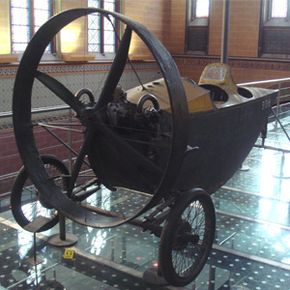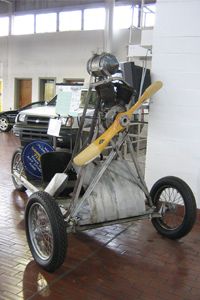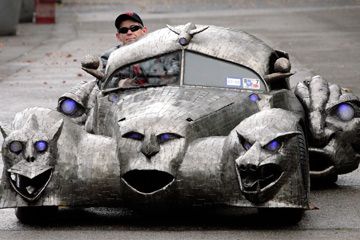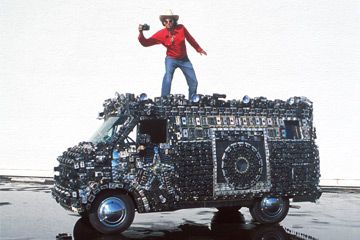You can call them early hybrids -- the propeller-driven cars of the early 1900s. On a prop-driven car, the motor doesn't turn the wheels; instead, it powers a propeller, much like that of an airplane (and often borrowed from one), mounted on the front or back of the car. The speed is controlled only by a throttle lever; no transmission (or gearbox) is used. At the time, this simplicity was believed to increase fuel economy, although, as it turned out, that wasn't always the case.
A propeller-driven car is a much simpler machine than our modern autos, but its stripped-down drivetrain has potential for peril. The propeller eliminates the need for a transmission, clutch and brakes, which in turn takes away a lot of the driver's control. However, it should be pointed out that the brakes could be quickly augmented by simply reversing the propeller's flow. Other aspects of the cars were similarly ingenious.
Advertisement
Though a handful of resourceful folks contributed to the propeller-driven car's maturation, French engineer Marcel Leyat is credited with most of the innovation and development that resulted in a somewhat usable vehicle. Based on his previous experience as an airplane builder, Leyat thought propeller-driven cars could achieve better fuel economy since the mechanics of the machine were simpler. Many of the first prop-driven cars were reconfigurations of existing cars, but eventually, other engineers realized that a car that was pushed forward by air should work with the airflow, not against it. Cars that were designed specifically to work with propellers (not just existing autos that were adapted) featured futuristic pod-like designs to cut smoothly through the air. The aerodynamic shape remains a noteworthy innovation; some of the same design principles are still evident -- even in our modern "green" cars.
These cars could really move, too, at speeds of up to 85 miles per hour (136.8 kilometers per hour). Modern prop-driven car experiments have yielded even higher speeds, up to 170 miles per hour (273.6 kilometers per hour. But the prop-driven cars' development and its integration into polite society were not a matter of smooth sailing. Simply consider the design: As a 1912 New York Times article pointed out, the propeller blades and related debris presented a considerable hazard to the car's occupants or "to any inquisitive person." And, just like now, weren't most people inquisitive back then?
Advertisement




